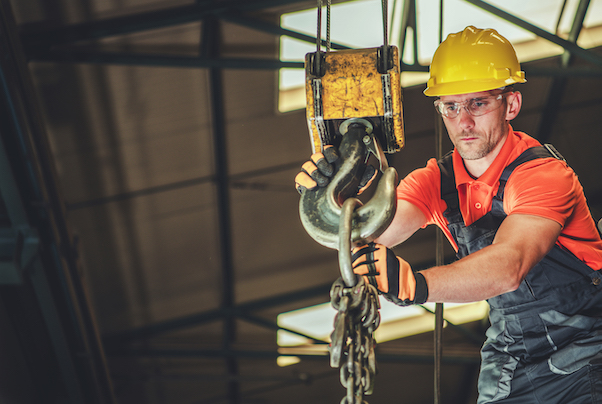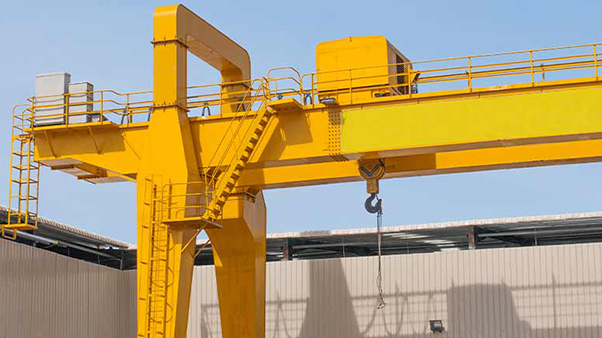


The overhead bridge crane is an important piece of machinery that has revolutionized material handling and increased efficiency. Because of its durable design and versatility, the overhead bridge crane has become an essential piece of equipment in a range of sectors. This article delves into a comprehensive exploration of the advantages and multifaceted applications of overhead bridge cranes, with a particular focus on their instrumental role in enhancing operational efficiency and ensuring utmost safety.
An overhead bridge crane, alternatively referred to as a bridge crane or a suspended crane, represents a highly efficient and versatile solution for the task of horizontally lifting and transferring substantial loads. It encompasses a bridge structure that gracefully traverses along elevated parallel runways, bolstered by end trucks positioned on either side. Embodying the epitome of precision, the bridge boasts an electrically driven hoist mechanism, granting meticulous command over the movement of heavy payloads.
Explore esteemed institutions specializing in crane training, where tailored programs for overhead cranes and rigging await your attention. Engaging in comprehensive crane training through such reputable schools will provide invaluable insights. To deepen your understanding of the benefits and various applications of overhead bridge cranes, peruse our enlightening essay. It underscores the paramount importance of acquiring proper training to enhance both efficiency and safety in crane operations.
With our unique OSHA Crane Training program, which includes professional training and thorough resources, you can stay OSHA compliant while improving worker safety.

Enhanced Efficiency: The implementation of overhead bridge cranes yields a remarkable upsurge in operational efficiency. These cranes facilitate the seamless transfer of substantial loads, reducing the need for labor-intensive tasks and expediting the manufacturing process. By deftly lifting and transporting heavy objects, these cranes optimize workflow and effectively prevent costly downtime, resulting in a notable improvement in overall operational efficiency.
Unparalleled Versatility: Overhead bridge cranes exhibit an extraordinary level of adaptability, capable of being precisely customized to cater to the unique demands of various industries. These cranes can be seamlessly configured to effortlessly handle an extensive spectrum of loads, spanning from lightweight to exceptionally heavy objects. Moreover, they offer a diverse array of attachments, including hooks, magnets, and specialized lifting devices, further expanding their versatility. This exceptional adaptability empowers enterprises to finely tailor the crane system to their specific requirements, ensuring maximum efficiency and productivity.
Enhanced Safety: Overhead bridge cranes play a pivotal role in cultivating a profoundly secure work environment, a paramount concern in industrial settings. By eliminating the need for manual lifting and handling, these cranes effectively mitigate the risk of employee injuries and fatigue-induced incidents. Furthermore, modern overhead bridge cranes boast advanced safety features, including limit switches, overload prevention mechanisms, and emergency stop buttons, to further fortify the safety infrastructure. Through such comprehensive safety provisions, these cranes ensure optimal protection for workers, instilling confidence and tranquility within the industrial landscape.
Manufacturing Excellence: Within industrial facilities, the indispensability of overhead bridge cranes is indisputable. These exceptional machines facilitate the seamless transfer and precise placement of heavy machinery, raw materials, and finished products. By optimizing efficiency and fostering a seamless flow of operations, they elevate the entire manufacturing process, particularly by streamlining assembly line processes. With their unparalleled contribution, overhead bridge cranes become catalysts for achieving manufacturing excellence, ensuring unrivaled productivity and operational success.
Efficient Warehousing and Logistics: In the realm of warehousing and logistics, the indispensability of overhead bridge cranes becomes glaringly apparent. These remarkable machines prove invaluable in the adept handling and storage of voluminous and weighty objects within warehouse and logistics environments. When coupled with cutting-edge automated systems, they revolutionize inventory management, facilitating seamless tracking and organization of goods. Additionally, the integration of overhead bridge cranes expedites the loading and unloading processes, ensuring swift and efficient movement of goods, ultimately leading to optimized operations and enhanced productivity in the warehousing and logistics realm.
Construction Advancements: The construction sector relies extensively on the widespread utilization of overhead bridge cranes, particularly for the precise lifting and placement of essential building materials, concrete panels, and weighty machinery. Renowned for their adept maneuverability across construction sites and their exceptional handling capabilities, these cranes stand as pivotal assets for large-scale projects. Their presence not only streamlines operations but also contributes significantly to the seamless execution of intricate construction endeavors, ushering in a new era of progress and efficiency within the industry.
Discover industry-leading overhead crane operator training programs that ensure safety and proficiency, available through reputable institutions recognized for excellence.
If you re seeking reliable overhead crane and rigging training, we offer a comprehensive range of courses and applications centered around overhead bridge cranes. Our tailored programs are designed to empower you with the skills and knowledge needed to enhance industrial processes. With our training, you'll unlock new possibilities for optimizing operations and achieving unparalleled efficiency in your industry.
In today's industrial landscape, overhead bridge cranes have emerged as indispensable assets, bringing forth a plethora of advantages including heightened efficiency, remarkable versatility, and enhanced safety. Through their exceptional capacity to manage hefty loads and optimize material handling procedures, these cranes play a pivotal role in bolstering productivity and operational triumph across diverse sectors. By making strategic investments in customized overhead bridge crane systems that align with their unique requirements, businesses can propel their operations towards unprecedented levels of efficiency and profitability.

An All Purpose Safety Training Solutions Company